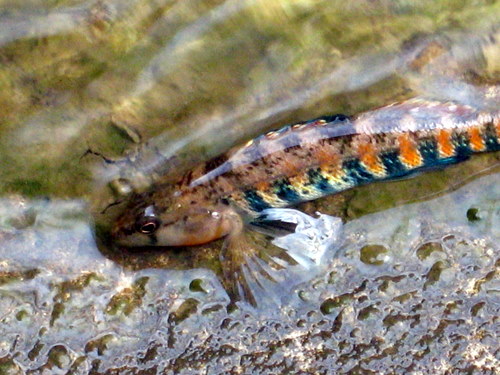Sacred places, special places, magical spots…as humans we have a tendency to identify specific or particular natural locations or sites with some sort of significance that sets these places apart from others. I have a feeling that this is an essential human feature; part of our never ceasing endeavor to recognize patterns in the natural world. Often these places touch or tweak something emotional, deep inside. We feel a greater sense of connectedness and awareness when we are in these special places. If Wilson’s biophilia hypothesis has merit then I suspect that we are simply recognizing specific areas with a high degree of biological importance to us humans–but I also think that personal memory and experience also contribute to create places that are so very special. When you have memories, experiences and biological importance then I think you have something really special…..
As a kid growing up in central Kansas, one of my special places was a wash out downstream from a concrete bridge that held water only after a significant rain. We called this pool the Tadpole Pond and I can guess that you have a good idea why. After every spring and summer rain when there was water in the pool, several of us in the neighborhood would round up our seines, jars, nets, and coolers in preparation of the big event–catching tadpoles by the hundreds along with the occasional crawdad, treasured green sunfish, black bullhead or snake. For me and my friends the Tadpole pond was our African Water Hole–we learned a lot of biology in the mud and muddy water. Who would have thought that a concrete bridge could create such a special place.
I have a new but similar special place where I keep track of the Kansas Aquatic environment and it too seems at first to be an unlikely spot:
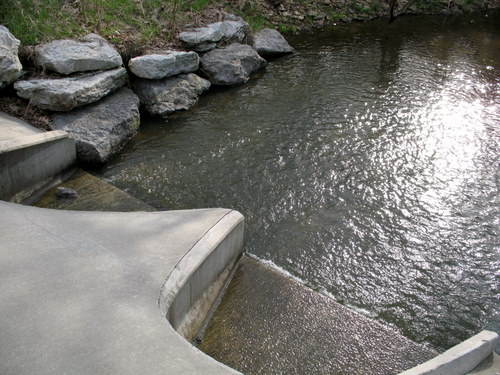
This is a low-water bridge for the lake outlet as it crosses one of the main trails in Johnson County’s Kill Creek Park. Remarkably, unimpressive as a natural area isn’t it? I started building my own personal memories here about 6 years ago when I would coax my son into playing hooky from his PhD studies and convince him to bring his new daughter, Emma out for nature hikes with Grandpa. One mid-May day at this particular site, Scott heard an unusual call that he thought was a warbler of some type. While Emma and I played on the concrete bridge Scott tracked down the calling warbler which he knew all along was a Black-throated Blue–he just didn’t want to make a bad call. For me this has always been the BTB crossing….
This spring I stopped by this crossing on three separate days about 2 weeks apart. On a whim in April I stopped after a significant rain–not planning on stopping at the crossing but when I got there I realized that I had picked a good day. As I sat down next to the outlet tubes I observed in the thin water good numbers of darters and minnows making their way upstream to spawn–just like the more famous salmon. The orange-throated darters would congregate just below the concrete apron and heave themselves in a mad dash in the fast current. Because the concrete was so level I was able to get good views of darters, creek chubs and stone rollers as they made there way upstream.
This may be a pimephlales minnow followed by a male orangethroated darter.
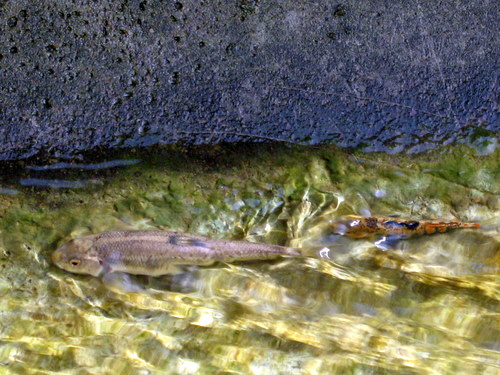
Male orange throated darter Etheostoma spectabile
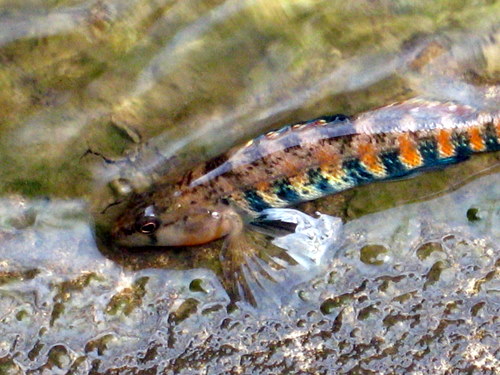
Females
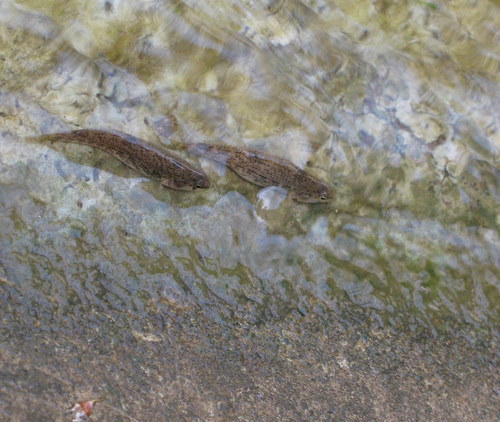
I had a great time for the next couple of hours taking pictures and observing this early spring migration.
Later, in May I went back, the water was down and very clear. I could see several green sunfish displaying to each other in the pool, a black bullhead and a number of minnows. Not thinking I’d see much else I was about to leave when I suddenly became aware (notice I didn’t say I observed them) of several Northern Water Snakes. Once I was aware, I was astounded at the number of smallish water snakes that kept swimming upstream to this pool. I never saw more than 6 at any one time but over the hour I was there, I estimate that I saw and average of a new snake every 1.5 to 2 minutes. Most swam up the stream, to the pool and then tried to swim the concrete culvert–unsuccessfully.
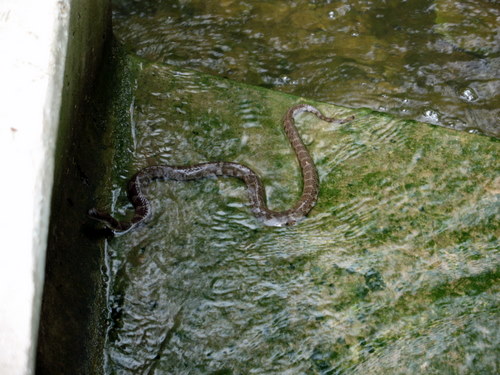
This one decided not to swim…
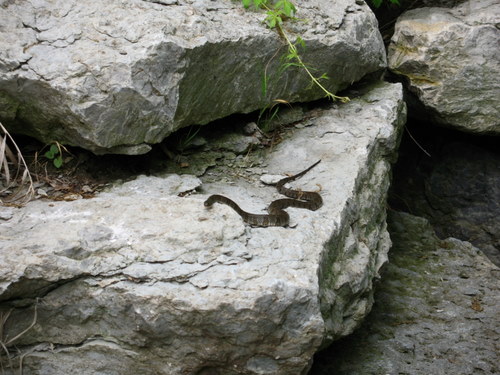
I have no idea what the snakes were up to but it was another great day. Actually, I do have an unproven hypothesis–I think the smaller snakes move upstream on these intermittent streams to access the new food resources that will be available in the developing habitat and to exploit the pools as they dry up.
I returned two weeks later after another rain. This time the water was cloudy and again I thought I really wouldn’t see anything but I was wrong. While trying to get a picture of a young 5-lined skink on the same rock as the snake in the picture above, I happened to look down in the boiling muddy water in a small eddy just as a large common snapper (ever hear of a small one? 😉 lifted its head out of the water with an open gape just inches from my elbow–again I was too slow with the camera. Each time I’ve visited the BTB crossing this spring, I’ve had an eventful day and like the darters I plan to return next spring for more of the show.
BW
